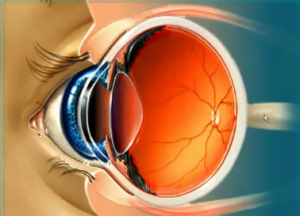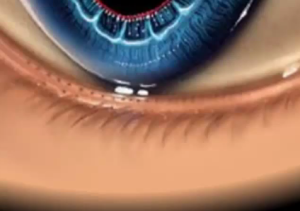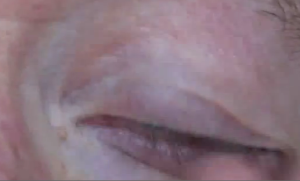What is blepharitis ?
Blepharitis is a medical disorder that leads to inflammation of the eyelids. Blepharitis normally occurs on the outer end of the eyelids, where there is growth of eyelashes.
Blepharitis is sometime known by another name, i.e. Granulated eyelids. Blepharitis that mainly occurs on the outer corners of the eyelids is known as angular blepharitis.
Blepharitis occurs when the small oil glands of eyelashes situated at lower end the eyelids fail to carry out their functions. Such inaction leads to inflammation of the eyelids which then causes them to become itchy, reddish, irritating; and collect scales which appear like dandruff on eyelashes.
Though blepharitis is not contagious and does not cause permanent harm to vision, it inflicts discomfort, is distressing and unattractive to look at. It is a condition that can affect individuals of all age groups and has a tendency to recur. Hence the treatment and management of blepharitis is often difficult.
Symptoms of Blepharitis
Blepharitis can occur on the lower and upper eyelids and may affect either one or both the eyes. Some of the symptoms of blepharitis are mentioned below:
- Watery eyes
- There may be increased redness of the eyelid borders
- Itchy eyelids
- A feeling of increased burning of the eyes
- A feeling of excessive grittiness in the eyes
- Increased redness of the eyes as well
- A feeling of increased sandiness of the eyes
- Swollen eyelids
- The eyelids may tend to look greasy, may be crusted with scales that fasten on to the eyelids.
- The skin cells present around the eyes may experience more shedding causing patches of dry and flaky skin around the eye. The eyelid may also get affected and have flaky and dry skin.
- Increased sensitivity to light
- Loss of eyelashes
- Abnormal growth of eyelashes
- A sensation of a foreign body presence in eye
- Increased crusting of eyelids
- Irritation in eye and in eyelids
- One may feel increased uneasiness in wearing contact lenses
- The eyelids may glue together in morning and the lashes may matt together
- Increasingly frothy and bubbly state of tears
- The eyelid margins may face slight or mild ulceration
- Affected individuals may wake up to find their eyes crusted
- The eyelid margins may face slight or mild scarring
- Presence of dandruff over eyebrows and eye lashes
Some of the complications that may result from blepharitis are:
- Chronic and long term blepharitis may cause permanent eyelid skin problem and scarring on eyelids.
- Blepharitis may cause long-term conjunctivitis or recurrent episodes of pink eye
- Sty infection may develop near the base of the eyelashes causing the formation of a lump inside the eyelids or on its edge which is painful. A sty on eyelids has an odd look to it and clearly visible.
- Misdirected and abnormal eyelashes and chronic inflammation can cause formation of an ulcer or a sore in the cornea. Corneal infection is common with deficient lubrication or tearing.
- When the tiny oil glands present on the eyelid borders get blocked, it may cause the formation of a chalazion and bacterial infection of the gland resulting in swollen and reddish eyelid. The chalazion tends to be more prominent and visible on inside of the eyelid in comparison with a sty.
- Blepharitis may cause the abnormal secretion and collection of debris such as flakes and dandruff shed from the eyelids, on the tear film. The tear film forms the tears along with the oil, water and mucus solution. The abnormalities prevent providing the lubrication required for the eyes and eyelids, which causes irritation and increased tearing.
Causes of Blepharitis
Some of the causes for blepharitis are as follows:
- Blepharitis is caused by the malfunctioning of the oil glands which leads to chronic irritation of the eye and eyelashes, Sty eyes, inflammation, ulcer in cornea, etc.
- Diseases and disorders such as bacterial infection, seborrheic dermatitis, rosacea, allergies that cause allergic reactions to ocular medications and eyelash mites lead to increased risk within an individual to develop or contract blepharitis.
Blepharitis treatment
The following are the ways for the treatment of blepharitis:
- On a regular basis, clean the eyelids with washcloth twice a day.
- Bacterial infection that leads to the development of blepharitis can be treated by eye drops that contain antibiotics. Ointment, pills, cream, etc. that contain antibiotics may also be used on occasions.
- To remove the dryness of the eyes, lubricating eye drops or artificial tears can be used as treatment
- Inflammation of the eyes and eyelids can be treated and managed with the use of eye drops and ointments that contain steroids
- If blepharitis is caused by some existing medical disorder, then effective treatment of the associated medical illness will help to control blepharitis.
Blepharitis pictures


